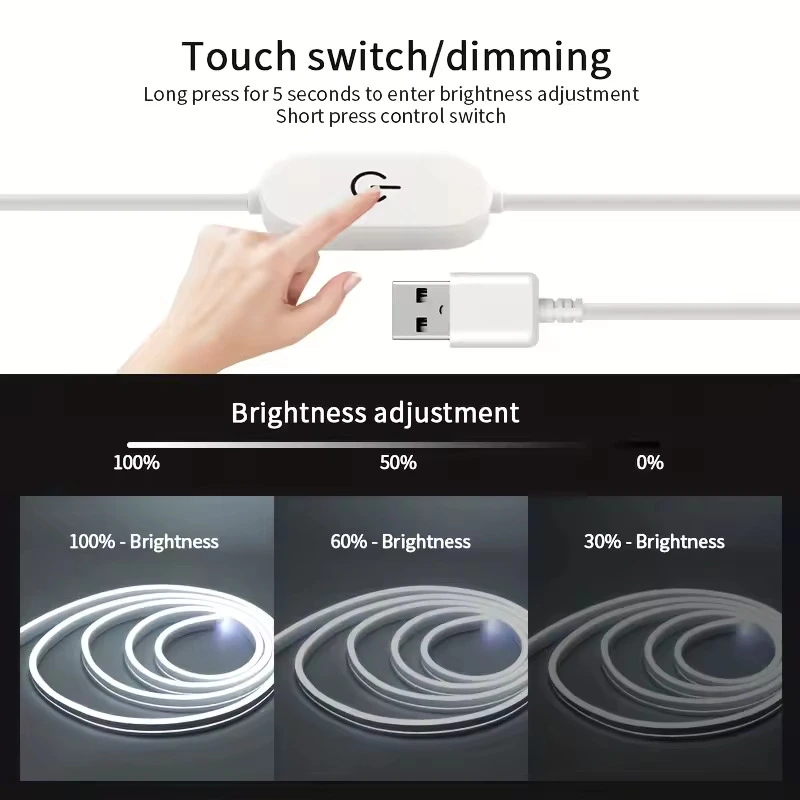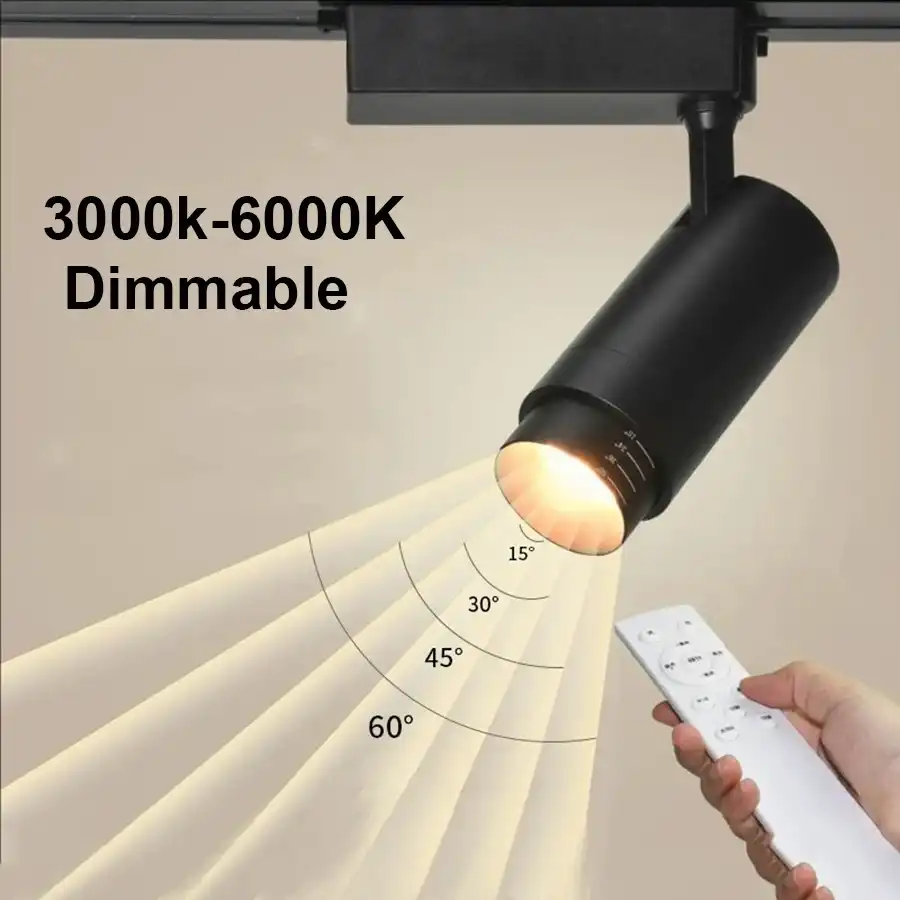Introducing Flexible Linear Lighting for Walls
What is Flexible Linear Lighting?
Flexible linear lighting refers to a type of LED lighting system that can be bent, curved, or shaped to fit various architectural features and design requirements. Unlike traditional rigid lighting fixtures, flexible linear lights offer unparalleled versatility in installation and application. These lighting solutions typically consist of a flexible LED strip encased in a durable, bendable housing that can conform to different surfaces and contours.
Advantages of Flexible Linear Lighting for Walls
The benefits of incorporating flexible linear lighting into wall designs are numerous:
- Space Efficiency: These lights have a slim profile, allowing them to be installed in tight spaces without protruding significantly from the wall surface.
- Versatility: They can be used for accent lighting, task lighting, or general illumination, adapting to various lighting needs within a single space.
- Customization: Flexible linear lights can be cut to specific lengths and shaped to fit unique architectural features, ensuring a perfect fit for any design.
- Energy Efficiency: LED technology used in these lighting systems consumes less energy compared to traditional lighting options, contributing to lower operational costs and reduced environmental impact.
- Even Illumination: The continuous light source provided by flexible linear lighting creates uniform illumination without harsh shadows or hot spots.
Applications in Different Settings
Flexible linear lighting for walls finds applications across various environments:
- Residential Spaces: In homes, these lights can accentuate artwork, highlight architectural features, or provide indirect ambient lighting in living rooms, bedrooms, and kitchens.
- Commercial Offices: They can be used to create dynamic lighting effects in reception areas, illuminate workspaces, or enhance meeting rooms with adjustable lighting scenarios.
- Retail Environments: Flexible linear lights can draw attention to product displays, create eye-catching storefront designs, or guide customers through the space.
- Hospitality Settings: In hotels and restaurants, these lighting solutions can set the mood, define spaces, and create immersive dining or lounging experiences.
- Healthcare Facilities: They provide gentle, glare-free illumination in patient rooms and can be used for wayfinding in corridors.

Design Strategies for Maximizing Space with Flexible Linear Lighting
Highlighting Architectural Features
One of the most effective ways to maximize space using Flexible Linear Lighting for Walls is by highlighting architectural features. This technique not only draws attention to the unique aspects of a room but also creates an illusion of depth and dimension, making even compact areas appear more open, sophisticated, and visually balanced. Consider these approaches:
- Cove Lighting: Install flexible linear lights in ceiling coves to wash walls with soft, ambient light. This technique makes ceilings appear higher and rooms more spacious.
- Column Accentuation: Wrap columns or pillars with flexible linear lights to create visual interest and define vertical space.
- Niche Illumination: Use these lights to brighten wall niches or recesses, adding depth and character to otherwise flat surfaces.
- Staircase Enhancement: Integrate flexible linear lighting along staircase steps or handrails to improve safety and create a striking visual element.
Creating Illusions of Space
Flexible linear lighting can be strategically used to create optical illusions that make spaces appear larger:
- Vertical Emphasis: Install vertical lines of light to draw the eye upward, making ceilings seem higher and rooms more expansive.
- Wall Washing: Use flexible linear lights to evenly illuminate entire wall surfaces, pushing the perceived boundaries of the room outward.
- Corner Illumination: Place lights in room corners to soften edges and create a sense of openness.
- Backlit Panels: Create backlit wall panels using flexible linear lights to add depth and intrigue to flat surfaces.
Functional Lighting Solutions
Beyond aesthetics, flexible linear lighting can serve practical purposes while maximizing space:
- Under-Cabinet Lighting: In kitchens and workspaces, install these lights under cabinets to provide task lighting without taking up valuable counter space.
- Closet Illumination: Integrate flexible linear lights into closet systems to improve visibility and organization without the need for bulky fixtures.
- Bathroom Mirrors: Frame mirrors with flexible linear lighting to provide even, shadow-free illumination for grooming tasks.
- Bookshelf Accent: Illuminate bookshelves or display cases to showcase items and create visual interest in compact spaces.
Implementation and Best Practices
Installation Considerations
To ensure optimal performance and longevity of flexible linear lighting systems, consider these installation best practices:
- Surface Preparation: Ensure walls are clean, dry, and smooth before installation to promote proper adhesion.
- Heat Dissipation: Choose mounting channels or profiles that allow for adequate heat dissipation, especially for high-output LED strips.
- Power Distribution: Plan for even power distribution along the length of the installation to prevent voltage drop and ensure consistent brightness.
- Connectors and Accessories: Use high-quality connectors and end caps to protect the lights from dust and moisture.
- Professional Installation: For complex or large-scale projects, consider hiring a professional to ensure proper installation and electrical safety.
Color Temperature and Dimming
Selecting the right color temperature and implementing dimming capabilities can significantly enhance the effectiveness of flexible linear lighting in maximizing space:
- Warm vs. Cool Light: Choose warmer color temperatures (2700K-3000K) for cozy, intimate spaces, and cooler temperatures (4000K-6500K) for more energetic or task-oriented areas.
- Tunable White: Consider using tunable white LED strips that allow adjustment of color temperature to suit different times of day or activities.
- Dimming Options: Implement dimming controls to adjust light levels, creating versatility in space usage and ambiance.
- Scene Setting: Use smart lighting systems to create pre-programmed scenes that optimize space perception for different occasions.
Maintenance and Longevity
To ensure the long-term effectiveness of flexible linear lighting in maximizing space, consider these maintenance aspects:
- Regular Cleaning: Dust and clean the lighting fixtures periodically to maintain optimal light output and prevent overheating.
- Inspection: Regularly inspect the installation for any signs of wear, loose connections, or damage. Routine maintenance helps ensure that Flexible Linear Lighting for Walls continues to deliver consistent brightness, color accuracy, and optimal performance throughout its lifespan.
- Upgrades: Stay informed about advancements in LED technology and consider upgrading to more efficient or feature-rich options when appropriate.
- Professional Servicing: For complex systems or those integrated with smart home technology, schedule periodic professional check-ups to ensure optimal performance.
Conclusion
Flexible linear lighting for walls offers an innovative and versatile solution for maximizing space in various interior environments. By understanding its applications, implementing strategic design techniques, and following best practices for installation and maintenance, designers and property owners can transform spaces to appear larger, more dynamic, and highly functional. The ability to seamlessly integrate these lighting systems into architectural features while providing customizable illumination makes flexible linear lighting an indispensable tool in modern interior design. As technology continues to advance, the potential for creative and space-enhancing lighting solutions will only grow, offering exciting possibilities for future interior spaces.
FAQ
How energy-efficient are flexible linear lights compared to traditional lighting?
Flexible linear LED lights are significantly more energy-efficient than traditional lighting options, often consuming up to 75% less energy while providing the same or better illumination.
Can flexible linear lighting be used outdoors?
Yes, there are outdoor-rated flexible linear lighting options available that are designed to withstand various weather conditions.
How long do flexible linear LED lights typically last?
High-quality flexible linear LED lights can last up to 50,000 hours or more, depending on usage and environmental factors.
Transform Your Space with USKYLED's Flexible Linear Lighting Solutions | USKYLED
At USKYLED, we specialize in cutting-edge flexible linear lighting solutions designed to maximize your space and elevate your interior design. As a leading manufacturer and exporter of high-performance LED lighting, we offer custom OEM/ODM solutions tailored to your specific needs. Our advanced LED technology ensures high CRI (90+), flicker-free performance, and smart control compatibility. Experience the USKYLED difference in quality, sustainability, and innovation. Contact our expert team at sales@uskyled.com to explore how our flexible linear lighting can transform your walls and spaces.
References
1. Smith, J. (2022). "The Impact of Linear Lighting on Spatial Perception in Interior Design." Journal of Architectural Lighting, 45(3), 112-125.
2. Johnson, A. & Lee, M. (2021). "Flexible LED Technologies: Advancements and Applications in Modern Spaces." Illumination Engineering Review, 18(2), 78-92.
3. Chen, L. et al. (2023). "Energy Efficiency and User Experience: A Comparative Study of Flexible Linear Lighting Systems." Sustainable Lighting Solutions, 7(1), 45-60.
4. Williams, R. (2022). "Maximizing Small Spaces: Innovative Lighting Techniques for Urban Living." Urban Design and Architecture Journal, 29(4), 201-215.
5. Garcia, M. & Thompson, K. (2023). "The Psychology of Light: How Linear Wall Illumination Affects Spatial Perception." Environmental Psychology Today, 12(3), 155-170.



![What is Dimmable Track Lighting for Museum: Best Guide [2025]](/icms/upload/0d08cc601e7611f0b542b3ca0c0f4a83/pic/knowledgemanager-knowledgepic/e7879f32605f11f081911f363b8c1ed0/Directory/20250717 dimmable track lighting -1(1)_1752739217941.webp)

